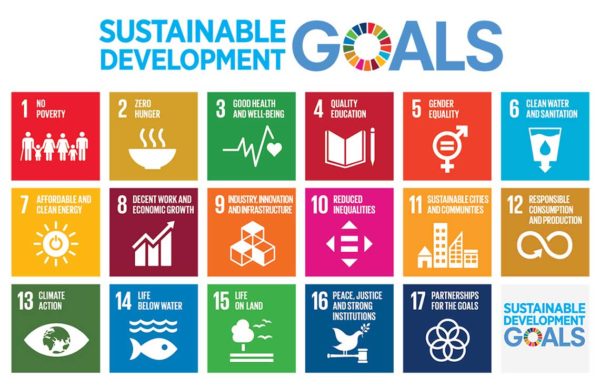FIT Innovators as Agents of Change
Indigenous Perspectives on Sustainable Development
7th Generation Principle
Originating from the Haudenosaunee (Iroquois) peoples, the 7th generation principle is a philosophy in which all decisions are understood by their long-term impact – 7 generations into the future.
Indigenous world views include the concept of collective responsibility for utilizing the land, understanding the interconnectedness and interdependence of all life forms and considers growth, reproduction, and regeneration cycles in all decision making. The interruption of these natural cycles and patterns can be devastating on the natural environment and impact the wellbeing of future generations. Ensuring that an equitable quality of life is possible for seven generations to come can change the way we interact with our human and natural environment.
FIT aligns with the 7th generation principle and asks innovators to consider the broad impact (generational and downstream) of their innovation test.
Women as Agents of Change
The impact of climate change is not gender neutral. Due to socially constructed roles, lack of access to basic knowledge, resources and rights, women and girls are disproportionately affected by extreme climate change events such as droughts and floods. At the same time, women have a critical role in climate change solutions but lack full participation in decision-making processes. Empowering women will be necessary to combat climate change.
Canada’s Feminist International Assistance Policy, aimed at the empowerment of women and girls and gender equality, identifies the important role that women and girls play in climate action. Women and girls in developing contexts rely on the environment for fuel, water, food and shelter and are vital to ensuring environmental sustainability. However, due to gender disparities women and girls often have less decision-making power when it comes to the management and use of ecosystems and natural resources. This is due to various factors, including differences in ownership, knowledge, rights and uses. There are three ways in which innovators can ensure that women’s voices are included in innovative climate action;
- Understanding the environmental barriers and challenges that women and girls face by conducting a rapid gender assessment at the design phase. See the FIT Rapid Gender Scan For the Social Innovation Space (PDF) for more information.
- Supporting women’s decision-making and leadership contributions in climate change mitigation and adaptation as well as in environmental sustainability. Innovators should actively engage women in the design and implementation of their innovation test. Check out the FIT Inclusive Innovation (PDF) resource for some additional information.
- Supporting livelihood opportunities for women in the renewable energy sector. In developing contexts, women have the primary responsibility over household energy which presents an opportunity to place them in a central role to reduce global carbon emissions.
Climate Action Innovation Opportunities
Sustainable development balances social well-being, gender equality and women’s empowerment, economic prosperity and environmental protection. Here are some focus areas where innovators can become climate action agents of change:
- Policy
- Policies that promote diversification of the economy and the energy sector.
- Redistributive policies across sectors and populations that protect vulnerable populations and the environment.
- Policy tools that help mobilize incremental resources, investments, savings, market and non-market-based actors as well as accompanying measures to secure the equity of the transition to a zero-emission economy.
- National innovation policies and international cooperation approaches that contribute to the development, commercialization and widespread adoption of climate change mitigation and adaptation technologies.
- Climate Finance
- Supporting the poorest and most marginalized to address loss and damage related to extreme sudden-onset or protracted climate events.
- Directing finance towards investment in infrastructure for climate change mitigation and adaptation.
- Technology
- Widespread adoption of new and possibly disruptive technologies and practices and enhanced climate-driven innovation.
- Enhanced technological innovation capabilities, including in industry and finance.
- Restoring / Protecting Nature
- Includes protecting or restoring land, water, forests, water systems, biodiversity, animal habitat etc.
- Education and Capacity Building
- Education, information, and community approaches, including those that are informed by Indigenous knowledge and local knowledge, that accelerate the wide-scale behaviour changes consistent with adapting to and limiting global warming to 1.5°C.
- Public acceptability strategies that enable or inhibit the implementation of policies and measures to limit global warming to 1.5°C and to adapt to the consequences.
- Strengthening the capacities for climate action of national and sub-national authorities, civil society, the private sector, indigenous peoples and local communities that support the implementation of ambitious actions implied by limiting global warming to 1.5°C.
- Social Justice and Equity
- Establishing social justice and equity to ensure that options, visions, and values are deliberated, between and within countries and communities, without making the poor and disadvantaged worse off.
- Cross Sectoral and International Cooperation
- Partnerships involving non-state public and private actors, institutional investors, the banking system, civil society and scientific institutions that facilitate actions and responses consistent with limiting global warming to 1.5°C.
- Cooperation on strengthened accountable multilevel governance that includes non-state actors such as industry, civil society and scientific institutions, coordinated sectoral and cross-sectoral policies at various governance levels, gender sensitive policies, finance including innovative financing, and cooperation on technology development and transfer that ensures participation, transparency, capacity building and learning among different players.
- International cooperation as an enabler for developing countries and vulnerable regions to strengthen their action for the implementation of 1.5°C consistent climate responses, including through enhancing access to finance and technology and enhancing domestic capacities, considering national and local circumstances and needs.
Adapted from the IPCC 2020 Report



